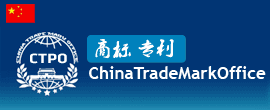
| This site in other countries/regions: |
| English 日本語 한국어 Deutsch Français Русский Italiano Español Português |
 |
||
Industrial cooperation within SCOHarmonizing technical standards, developing financial instruments, protecting IP and deepening logistics integration can help overcome challengesAgainst the backdrop of a tariff war and instability in the global economy, industrial cooperation among Shanghai Cooperation Organization countries is gaining particular importance. By combining human potential and natural resources, the SCO member states are able to form sustainable production chains and develop complementary industries. Such cooperation will increase technological independence, expand exports and investment opportunities, and reduce dependence on external markets — which is especially important in the context of disruptions in global supplies and increasing competition for resources and technologies. As of 2025, the SCO countries comprise nearly half of the world's population, of which more than 45 percent are working-age people — an important resource for industrial growth. In 2024, the combined GDP of the organization's members reached about one-fourth of the world's total. The volume of exports amounted to about 20 percent of global exports, with China ($3.5 trillion) and Russia ($434 billion) leading the way. Current macroeconomic indicators reflect not only the scale of the economy, but also the broad industrial potential of SCO member countries. For example, Russia and China are actively developing cooperation in strategic sectors such as energy, chemistry, metallurgy and technology. The Amur Gas Chemical Complex, the largest joint project, is expected to produce up to 2.7 million metric tons of polymers per year in the future, becoming one of the largest in the world. As part of the Russian-Chinese cooperation, joint technology parks are being created to develop high-tech industries. Among them are the Changchun China-Russia Science and Technology Park and the China-Russia high-tech center at Skolkovo, which houses research structures in the fields of information and communications technology, artificial intelligence and robotics. In the pharmaceutical sector, the first park concentrating biomedicine and pharmaceutics industries was established in Guangzhou this July, providing a platform for integrating research and development resources in biomedicine and healthcare and training professionals for high-tech manufacturing sectors. In addition, Iran is actively cooperating with China and Russia in the oil and gas sector. China has invested over 2 billion euros ($2.32 billion) for upgrading the Abadan refinery. Russia plans to invest another $8 billion in Iran's gas projects. The Great Stone China-Belarus Industrial Park is one of the largest and most successful examples of industrial cooperation between Belarus and China, which has attracted nearly $1.3 billion worth of global investment. By the end of 2025, it is expected that around 5,0000 jobs will be created, including positions for IT specialists. It serves as an important platform for the development of high-tech and innovative manufacturing, as well as for attracting foreign investments. China is also actively involved in the renewable energy sector in Uzbekistan. In 2023, agreements were signed on projects to build solar and wind power plants with a total capacity of 4.8 gigawatts. A Chinese company has begun construction of a 100-megawatt solar power plant in the Chui region of Kyrgyzstan. The project will create about 500 jobs. In Tajikistan, State-owned China Datang Corporation intends to build a solar power plant with a capacity of up to 500 MW in the Sughd region. Despite the active agenda of industrial cooperation within the SCO, there are challenges and limitations that hinder further development. First, insufficiently developed logistics between individual countries (for example, between India and Central Asia via Afghanistan) limits trade turnover. The Chabahar port project, important for transporting goods from India to Iran and further to the Central Asian region, is progressing slowly. Despite the agreement on the transfer of management in 2018, the full deployment of infrastructure is behind schedule. Second, the lack of a unified regulatory framework in industry complicates the integration of production chains. For example, in mechanical engineering, differences in safety and certification standards between China, Russia and India hinder the joint development and supply of high-precision equipment. Third, within the SCO, significant disparities remain in socioeconomic development levels, technological backwardness (especially in Central Asian countries), and shortages of qualified personnel and infrastructure. This creates technological and logistical barriers, complicating the implementation of joint projects and the formation of regional production chains due to differences in investments, infrastructure and human capital. Fourth, the absence of a fully functioning SCO Development Bank and the low level of interbank financing hinder the launch of large infrastructure and industrial projects. In 2023, the initiative to create such a bank was discussed. At the SCO Tianjin Summit, which convened on Aug 31 and Sept 1, Chinese President Xi Jinping called for the creation of an SCO Development Bank, an institution that could anchor long-term financing for infrastructure, energy and digital transformation. In general, a systematic approach to overcoming current challenges is needed for the effective development of industrial cooperation within the SCO. This includes the harmonization of technical standards, the development of financial instruments, the protection of intellectual property and the deepening of logistics integration — key measures to maintain the pace of industrial cooperation in the context of global competition. In this context, the Central Asian countries, which are the core of the SCO, can play a special role. With significant natural resources and developing infrastructure, they are capable of becoming not only a solid resource basis for industrial cooperation, but also, in the long term, a key industrial hub for the organization. It is important to note that the SCO Tianjin Summit determined further priorities and specific mechanisms for implementing joint projects aimed at strengthening industrial cooperation and developing an innovative economy in the Eurasian space. (Source from China daily) |
|
About us |
Contact us |
Fee FAQ |
Laws |
Marks |
Online billing
ChinaTradeMarkOffice.com Site:
International -
日本語 -
한국어 -
Deutsch -
Français -
Русский -
Italiano -
Español -
Português |